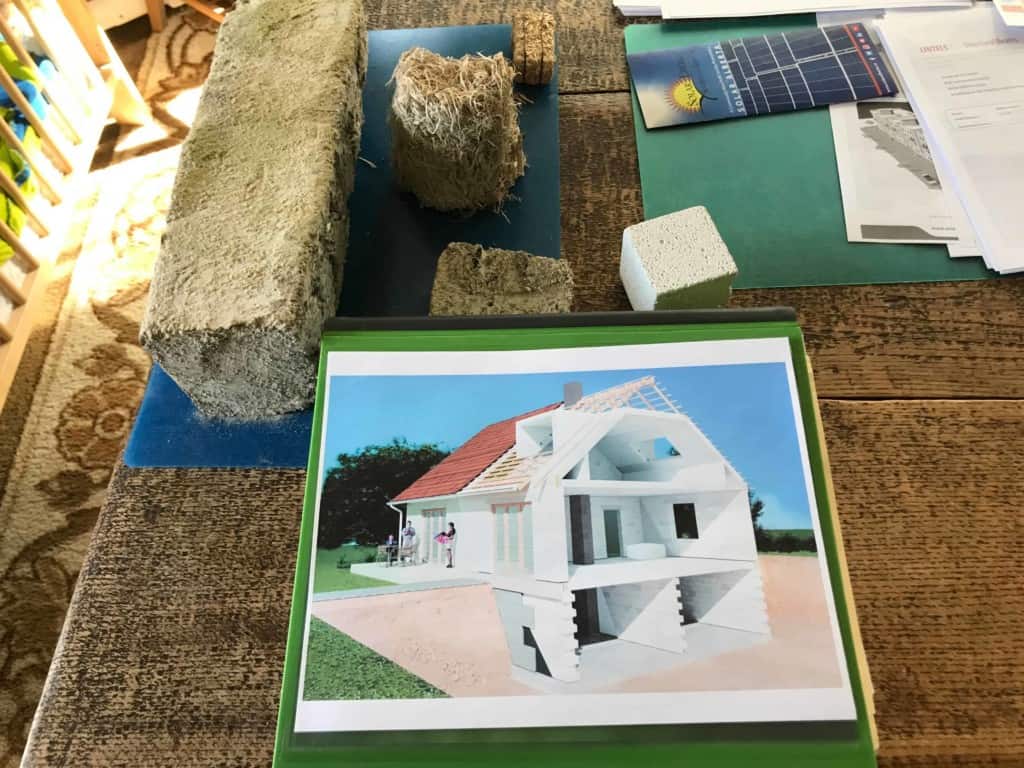Hempcrete can help make a net zero home
Local resident’s journey from forestry led him to sustainable alternative
Peter Zurrdeeg is not your typical neighbour.
I first met Zurrdeeg while checking out his front boulevard in Parkdale-Cromdale. Most boulevards in mature neighbourhoods have a stretch of green grass and a couple of elm trees plopped into place. Sure, he has the trees, but he also has filled the green space between them with beautiful perennials and cherry bushes that you just can’t help but taste as you walk by.
Zurrdeeg also makes hempcrete houses. He had a couple of blocks of hempcrete on the table when I arrived at his house.
Of course, he did other things on his way to building homes. Zurrdeeg studied forestry in Holland and Germany before making his way to Canada. He immigrated to Canada hoping to work in the forestry industry, but quickly found out it was not what he thought it would be.
“When I started to get into forestry [in Canada], I found that forestry was not the same forestry that I learned.”
The system he had learned was based around a forest’s ecosystem. European companies would look at which species of trees were good for harvesting and which were supportive species. Then they chose what to harvest in a way that kept balance in the environment.

When he landed in Quebec, he discovered the Canadian forestry industry was about harvesting everything and leaving no balance in the ecosystem. He says, “I don’t want to be part of that; I don’t support that.” Zurrdeeg wanted to be supportive of the environment and give back to it rather than take from it.
So, he started a tree nursery; he was an arborist for a time. Then, he developed a cone-harvesting machine and started a company called Canadian Cone Collectors. Zurrdeeg’s company would collect cones for reforestation after the forest had been harvested. However, there was a lot of travelling involved, and because he had a young family he decided to try something new. He opened a new company called Go Green Ltd. This is what brought him into the world of hempcrete and straw construction.
Farmers grow hemp to produce hemp seed for food and oil. Hemp seed is a high-value commodity which can give the farmer a good return on their investment. The problem is that this practice uses only the top portion of the hemp plant, leaving the rest of the plant and its valuable fibres behind.
“The development of hempcrete came as a direct response for what to do with the leftovers [from hemp harvesting],” he says.
With the leftovers you get two products: the fibre and little sticks called hurd. The hurd is the centre of the stem and the fibre is the very thin skin on the stalk of the hemp plant. The hempcrete bricks are made by combining the hemp fibres and hurd with calcium.
Hempcrete bricks are not used as a supportive structure for the house, but go in between the wall frames and act as both a wall and an insulator. Hempcrete has an R value of R3-R4 per inch, meaning these bricks are perfect for someone trying to build a net zero home.
As great as this sounds, there are some hurdles to jump when it comes to developing the hempcrete into a commercially viable alternative.
According to Zurrdeeg, “We currently have no hemp fibre processing plants in North America.” So until that happens, if you are interested in having a hempcrete home you will have to find a contractor like Zurrdeeg to guide you along in the right direction. To learn more, search “Industrial Hemp Building Project Share Canada” on Facebook.
Featured Image: Peter Zurrdeeg’s career in forestry led him to the sustainability of hempcrete. | Steven Townsend







